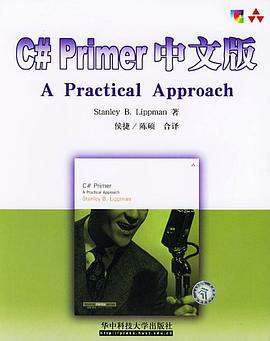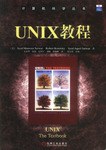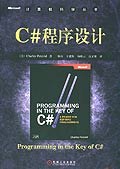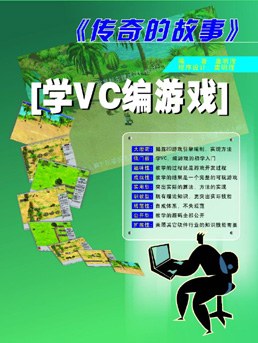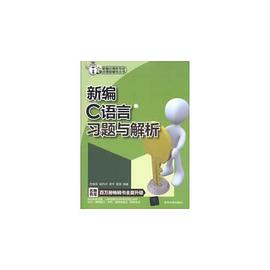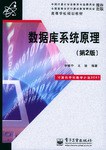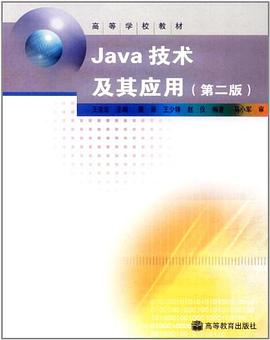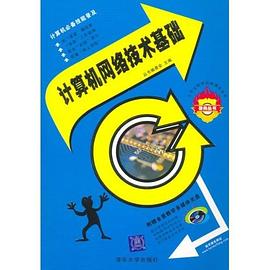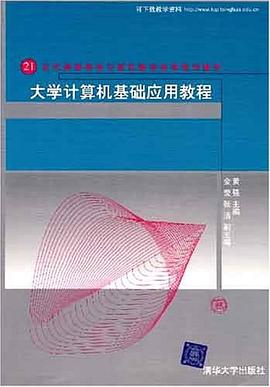

具體描述
數據庫領域的殿堂級作品
夯實數據庫理論基礎,增強數據庫技術內功的必備之選
對深入理解數據庫,深入研究數據庫,深入操作數據庫都具有極強的指導作用!
《數據庫係統概念》是數據庫係統方麵的經典教材之一,其內容由淺入深,既包含數據庫係統基本概念,又反映數據庫技術新進展。它被國際上許多著名大學所采用,包括斯坦福大學、耶魯大學、得剋薩斯大學、康奈爾大學、伊利諾伊大學等。我國也有多所大學采用本書作為本科生和研究生數據庫課程的教材和主要教學參考書,收到瞭良好的效果。本書基於該書第6版進行改編,保留其中的基本內容,壓縮或刪除瞭一些高級內容,更加適閤作為國內高校計算機及相關專業本科生數據庫課程教材。
本書特點:
●內容簡練。保留瞭原書最基本的內容,講述數據庫係統的基本概念;對數據庫係統實現技術以及數據管理與應用的高級主題,進行瞭有選擇性的介紹。
●直觀易懂。采用直觀的方式描述概念,以結構清晰的圖示和示例代替形式化的證明。
●實用性強。以大學數據庫實例生動地解釋重要概念,通俗易懂。
●內容新穎。反映瞭數據庫在設計、管理和使用方式等方麵的變化及數據庫概念方麵的發展趨勢。
著者簡介
Abraham Silberchatz 於紐約州立大學石溪分校獲得博士學位,現為耶魯大學計算機科學Sidney J. Weinberg教授,計算機科學係主任,曾任貝爾實驗室信息科學研究中心副主任。他是ACM Fellow 和 IEEE Fellow,曾獲得IEEE Taylor L.Booth 教育奬、 ACM Karl V.Karlstrom 傑齣教育者奬、ACM SIGMOD 貢獻奬和IEEE 計算機學會傑齣論文奬。他的研究興趣包括操作係統、數據庫係統、存儲係統、網絡管理和分布式係統。
Henry F. Korth 於普林斯頓大學獲得博士學位,現為利哈伊大學計算機科學與工程係Weiseman教授,曾任貝爾實驗室數據庫原理研究中心主任。他是ACM Fellow 和 IEEE Fellow,是VLDB 10年貢獻奬的獲得者。他的研究興趣包括為現代計算架構(多核、多綫程、多級緩存)設計的數據庫算法、基於Web的大型數據倉儲、實時數據庫係統和並行係統。
S. Sudarshan 於威斯康星大學麥迪遜分校獲得博士學位,現為印度理工學院計算機科學與工程係教授,曾為貝爾實驗室數據庫研究組技術人員。他的研究興趣包括查詢處理和優化、關係數據和圖結構數據的關鍵字查詢,以及構建和測試數據庫應用係統的工具。
圖書目錄
chapter 1 introduction
1.1 database-system applications 1
1.2 purpose of database systems 3
1.3 view of data 6
1.4 database languages 9
1.5 relational databases 12
1.6 database design 15
1.7 data storage and querying 20
1.8 transaction management 22
1.9 database architecture 23
1.10 data mining and information retrieval 27
1.11 specialty databases 28
1.12 database users and administrators 29
1.13 history of database systems 31
1.14 summary 33
review terms 35
practice exercises 35
exercises 36
tools 36
.bibliographical notes 36
part one relational databases
chapter 2 introduction to the relational model
2.1 structure of relational databases 41
2.2 database schema 44
2.3 keys 47
2.4 schema diagrams 48
2.5 relational query languages 49
2.6 relational operations 50
2.7 summary 54
review terms 54
practice exercises 55
exercises 56
bibhographical notes 57
chapter 3 introduction to sql
3.1 overview of the sql query language 59
3.2 sql data definition 60
3.3 basic structure of sql queries 65
3.4 additional basic operations 76
3.5 set operations 81
3.6 null values 85
3.7 aggregate functions 86
3.8 nested subqueries 92
3.9 modification of the database 100
3.10 summary 106
review terms 106
practice exercises 107
exercises 110
tools 113
bibliographical notes 114
chapter 4 intermediate sql
4.1 join expressions 115
4.2 views 122
4.3 transactions 129
4.4 integrity constraints 130
4.5 sql data types and schemas 138
4.6 authorization 145
4.7 summary 152
review terms 153
practice exercises 154
exercises 157
bibliographical notes 158
chapter 5 advanced sql
5.1 accessing sql from a programming language 159
5.2 functions and procedures 175
5.3 triggers 182
5.4 recursive queries** 189
5.5 advanced aggregation features** 194
5.60lap** 199
5.7 summary 211
review terms 212
practice exercises 213
exercises 214
tools 218
bibliographical notes 218
chapter 6 formal relational query languages
6.1 the relational algebra 219
6.2 the tuple relational calculus 241
6.3 the domain relational calculus 247
6.4 summary 250
review terms 251
practice exercises 251
exercises 254
bibliographical notes 256
part two database design
chapter 7 database design and the e-r model
7.1 overview of the design process 259
7.2 the entity-relationship model 262
7.3 constraints 269
7.4 removing redundant attributes in entity sets 272
7.5 entity-relationship diagrams 274
7.6 reduction to relational schemas 283
7.7 entity-relationship design issues 290
7.8 extended e-r features 295
7.9 alternative notations for modeling data 304
7.10 other aspects of database design 310
7.11 summary 313
review terms 315
practice exercises 315
exercises 319
tools 321
bibliographical notes 321
chapter 8 relational database design
8.1 features of good relational designs 323
8.2 atomic domains and first normal form 327
8.3 decomposition using functional dependencies 329
8.4 functional-dependency theory 338
8.5 algorithms for decomposition 348
8.6 decomposition using multivalued dependencies 355
8.7 more normal forms 360
8.8 database-design process 361
8.9 modeling temporal data 364
8.10 summary 367
review terms 368
practice exercises 368
exercises 372
bibliographical notes 374
chapter 9 application design and development
9.1 application programs and user interfaces 375
9.2 web fundamentals 377
9.3 servlets and jsp 383
9.4 application architectures 391
9.5 rapid application development 396
9.6 application performance 400
9.7 application security 402
9.8 encryption and its applications 411
9.9 summary 417
review terms 418
practice exercises 419
exercises 421
project suggestions 422
tools 426
bibliographical notes 426
part three data storage,querying,and transaction management
chapter 10 data storage and data access
10.1 overview of physical storage media 429
10.2 magnetic disk and flash storage 432
10.3 organization of files and records 440
10.4 data-dictionary storage 445
10.5 database buffer 448
10.6 basic concepts of index 451
10.7 ordered indices 452
10.8 b+-tree index files 460
10.9 hash file organization and hash index 474
10.10 index definition in sql 482
10.11 summary 483
review terms 486
practice exercises 487
exercises 488
bibliographical notes 489
chapter 11 query processing and query optimization
11.1 overview 491
11.2 measures of query cost 493
11.3 implementation of relational algebra operation 495
11.4 evaluation of expressions 509
11.5 query optimization 512
11.6 summary 533
review terms 535
practice exercises 536
exercises 537
bibliographical notes 538
chapter 12 transaction management
12.1 transaction concept 541
12.2 transaction atomicity and durability 545
12.3 transaction isolation 548
12.4 serializability 554
12.5 recoverability 557
12.6 concurrency control 559
12.7 recovery system 573
12.8 summary 584
review terms 587
practice exercises 589
exercises 590
bibliographical notes 592
part four advanced topics
chapter 13 data warehousing and mining
13.1 decision-support systems 597
13.2 data warehousing 599
13.3 data mining 603
13.4 summary 610
review terms 611
practice exercises 612
exercises 612
tools 613
bibliographical notes 613
chapter 14 object-based databases
14.1 overview 615
14.2 complex data types 616
14.3 structured types and inheritance in sql 619
14.4 table inheritance 624
14.5 array and multiset types in sql 626
14.6 object-identity and reference types in sql 631
14.7 implementing o-r features 633
14.8 persistent programming languages 634
14.9 object-relational mapping 643
14.10 object-oriented versus object-relational 643
14.11 summary 645
review terms 645
practice exercises 646
exercises 648
tools 650
bibliographical notes 650
chapter 15 xml
15.1 motivation 651
15.2 structure of xml data 656
15.3 xml document schema 660
15.4 querying and transformation 668
15.5 application program interfaces to xml 678
15.6 storage of xml data 679
15.7 xml applications 686
15.8 summary 689
review terms 690
practice exercises 691
exercises 693
tools 694
bibliographical notes 694
chapter 16 advanced application development
16.1 performance tuning 697
16.2 performance benchmarks 713
16.3 other issues in application development 716
16.4 standardization 719
16.5 summary 724
review terms 725
practice exercises 725
exercises 726
bibliographical notes 727
bibliography 729
· · · · · · (收起)
讀後感
这本书前半部分讲sql和表的设计,后半部分讲实现。作为本科生来说,读前半部分就够了。我是没机会亲自实现一个数据库了,人生那么美好,不然我干嘛把时间都费在造轮子上面。最好买那个本科教学版,还省钱。做大作业部署wamp环境的时候,这本书还不如mysql的官方文档好用。考试...
評分E文原版书没有看过,但就中译本谈几点看法: 1、书是好书,看译文感觉有些饶舌,在概念的揭示上,该书部分地方显得语言不够精炼; 2、对于专业人士来说,即使已经开发了多个基于数据库的应用系统,这本书仍然值得一读,建议只读喜欢的章节,其中部分章节了解即可,细...
評分3年数据库开发经验, 随着系统的增大,越来越觉得设计系统吃力,决定补充一下基础的东西.买了第5版.耐着性子看了前3章,疯狂了.翻译的太差劲了.到处是概念,原理性的东西要一大堆东西证明... 不过在浏览整本书的时候,感觉后面的东西挺实用,为了看后面的东西不要不知所云,还是耐着性...
評分读起来很费劲,中文译本翻译的还不错。 或许是我粗浅不懂欣赏,但内容实在是生硬, 想找什么资料,往往只看到一个粗浅的评论。 举例说明,想找B+树索引和Isolation level的信息,只看到一个前言不搭后语的简短介绍,而没有一个系统性的深入概念的讲解。 推荐http://www.douba...
評分3年数据库开发经验, 随着系统的增大,越来越觉得设计系统吃力,决定补充一下基础的东西.买了第5版.耐着性子看了前3章,疯狂了.翻译的太差劲了.到处是概念,原理性的东西要一大堆东西证明... 不过在浏览整本书的时候,感觉后面的东西挺实用,为了看后面的东西不要不知所云,还是耐着性...
用戶評價
主要是基礎概念,對於搞清楚什麼是什麼有幫助,對於做dev沒啥幫助。。。
评分沒辦法,經典教材必讀,不知道中文版譯得如何。。。
评分沒辦法,經典教材必讀,不知道中文版譯得如何。。。
评分改編作者自作主張刪掉瞭好多重要內容,太不爽瞭,還要拿著電子版對著讀。長教訓瞭,精編版本的書再也不要買瞭
评分沒辦法,經典教材必讀,不知道中文版譯得如何。。。
相關圖書
本站所有內容均為互聯網搜索引擎提供的公開搜索信息,本站不存儲任何數據與內容,任何內容與數據均與本站無關,如有需要請聯繫相關搜索引擎包括但不限於百度,google,bing,sogou 等
© 2025 book.quotespace.org All Rights Reserved. 小美書屋 版权所有

